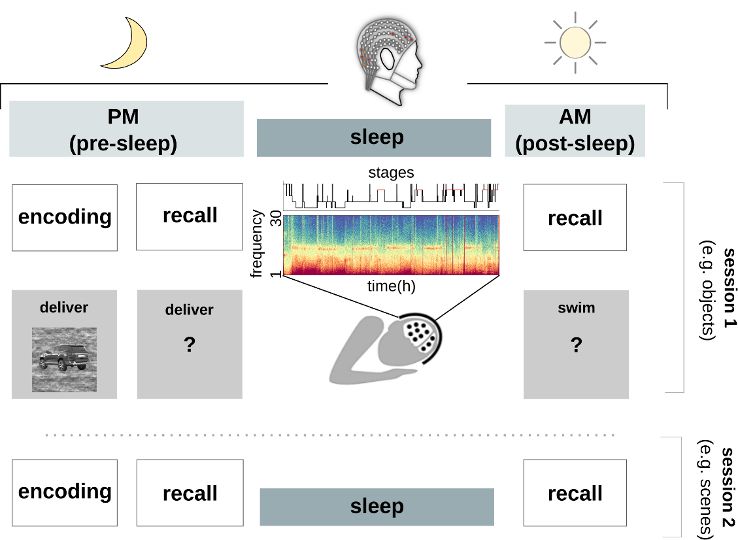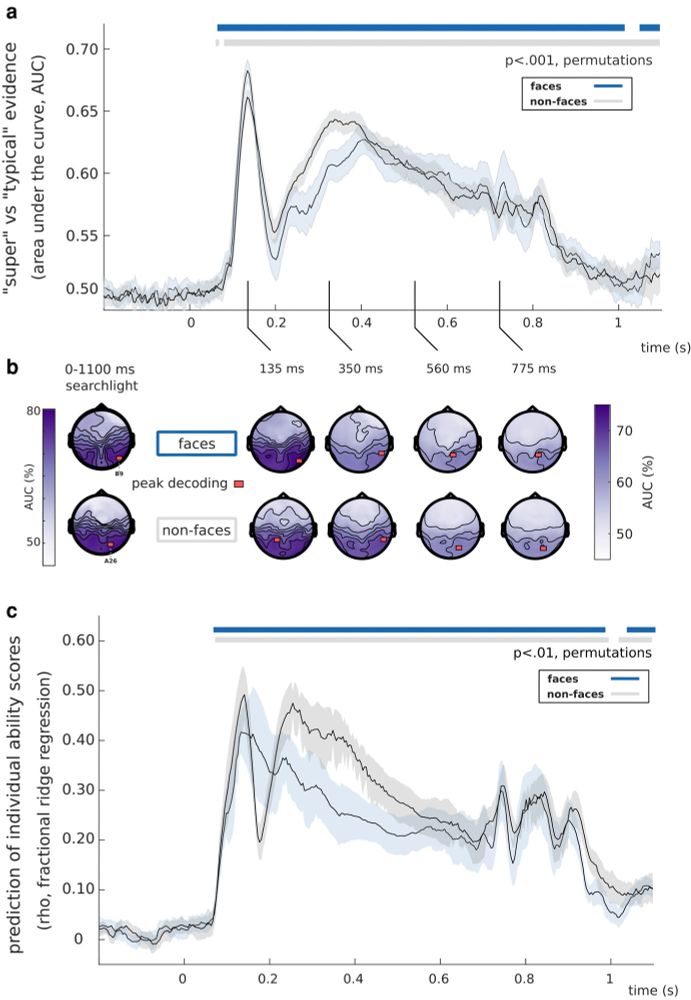
Simon Faghel-Soubeyrand
@simonfsoubeyrand.bsky.social
Oxford Postodoctoral Researcher, Staresina Lab || Banting Postdoctoral Fellow || vision, memory, sleep, machine learning
5/ Zooming out, we examined brain-wide connectivity. Before sleep, successful recall involved a specific network of regions. After sleep, functional connectivity patterns had reorganized, again correlating with SWS duration.

March 25, 2025 at 5:54 PM
5/ Zooming out, we examined brain-wide connectivity. Before sleep, successful recall involved a specific network of regions. After sleep, functional connectivity patterns had reorganized, again correlating with SWS duration.
4/ Comparing memory retrieval before and after sleep, recall effects shifted from parietal cortex to the anterior temporal lobe (ATL). This shift correlated with time spent in slow-wave sleep (SWS). In other words, deep sleep seems to support this shift in memory networks.

March 25, 2025 at 5:53 PM
4/ Comparing memory retrieval before and after sleep, recall effects shifted from parietal cortex to the anterior temporal lobe (ATL). This shift correlated with time spent in slow-wave sleep (SWS). In other words, deep sleep seems to support this shift in memory networks.
3/ Overall, successful memory recall was associated with decreased alpha power (8–12 Hz) over parietal regions (~700-1500 ms post-cue). This aligns with known retrieval networks.

March 25, 2025 at 5:52 PM
3/ Overall, successful memory recall was associated with decreased alpha power (8–12 Hz) over parietal regions (~700-1500 ms post-cue). This aligns with known retrieval networks.
2/ We recorded EEG while participants learned word-image pairs. They recalled them before and after a full night’s sleep. What changed in the brain overnight?

March 25, 2025 at 5:50 PM
2/ We recorded EEG while participants learned word-image pairs. They recalled them before and after a full night’s sleep. What changed in the brain overnight?
Results? We found larger similarity with these semantic computations in the brains of super-recognisers than in those of typical recognisers in a late processing window, between ~600 and 730 ms.

March 22, 2024 at 9:33 AM
Results? We found larger similarity with these semantic computations in the brains of super-recognisers than in those of typical recognisers in a late processing window, between ~600 and 730 ms.
The brain RDMs of super-recognisers showed larger similarity with the RDMs from CNN layers that represent mid-level features (e.g., combinations of edges, contour, shape, texture) between 133 and 165 ms.

March 22, 2024 at 9:32 AM
The brain RDMs of super-recognisers showed larger similarity with the RDMs from CNN layers that represent mid-level features (e.g., combinations of edges, contour, shape, texture) between 133 and 165 ms.
To better characterise the visual brain computations covarying with these differences, we compared the brain representations of our participants to those of convolutional neural networks (CNNs) trained to categorise objects using Representational Similarity Analysis (RSA).

March 22, 2024 at 9:28 AM
To better characterise the visual brain computations covarying with these differences, we compared the brain representations of our participants to those of convolutional neural networks (CNNs) trained to categorise objects using Representational Similarity Analysis (RSA).
Using MVPA, we could decode super-recognizers from 1 second of brain activity. This decoding peaked spatially in right-hemisphere electrodes, and peaked temporally around the N170 window.

March 22, 2024 at 9:25 AM
Using MVPA, we could decode super-recognizers from 1 second of brain activity. This decoding peaked spatially in right-hemisphere electrodes, and peaked temporally around the N170 window.
Why are some individuals better at recognising faces? We addressed this question by characterising the brain computations of individuals with extraordinary recognition abilities. These so-called "super-recognizers" scored in the top 1% on a standard test of face recognition abilities.

March 22, 2024 at 9:23 AM
Why are some individuals better at recognising faces? We addressed this question by characterising the brain computations of individuals with extraordinary recognition abilities. These so-called "super-recognizers" scored in the top 1% on a standard test of face recognition abilities.

